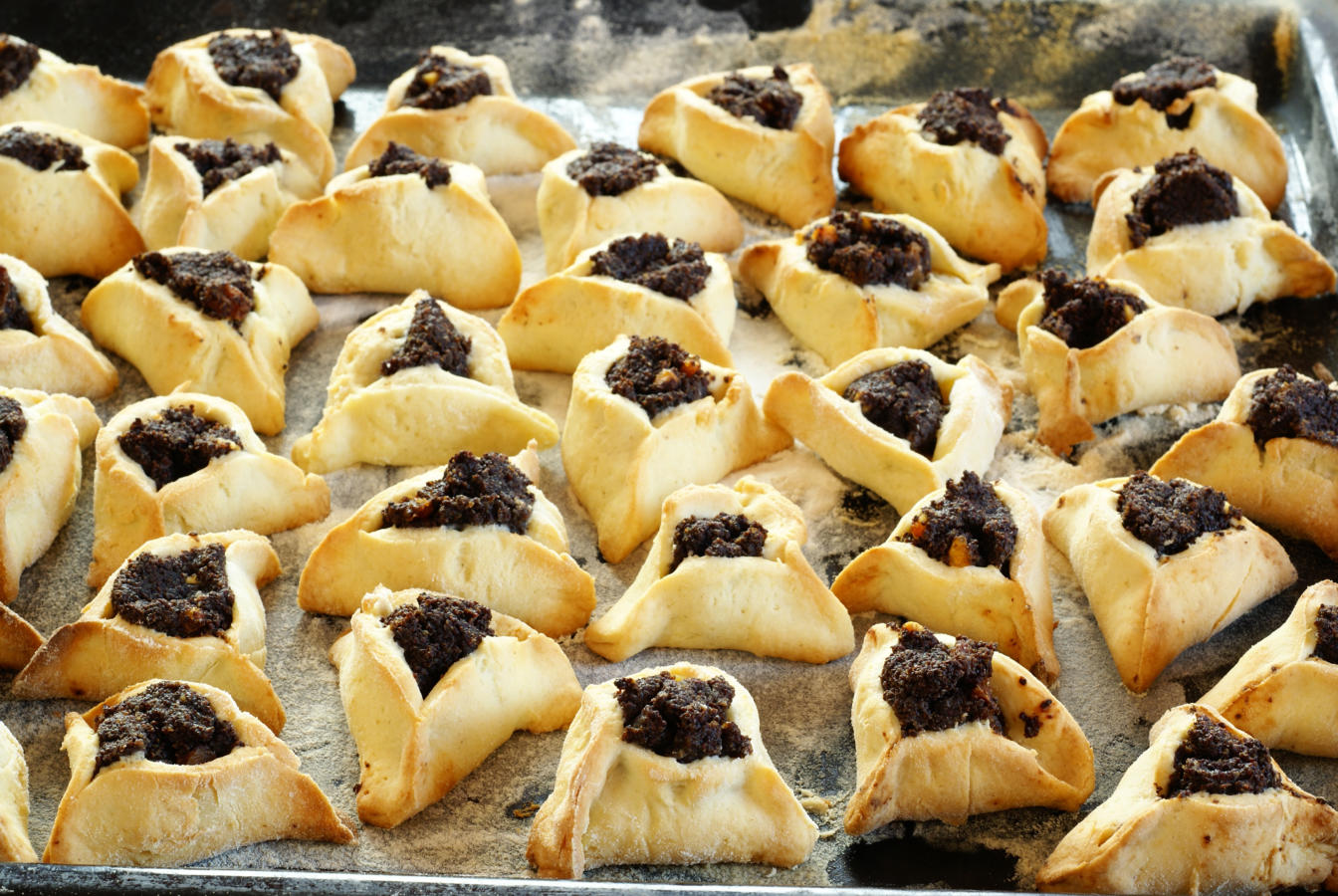My grandmother’s hamantaschen recipe is exactly the kind of recipe you’d expect to come out of an 1980’s era Jewish kitchen: It calls for orange juice, margarine and entirely too much sugar, and it yields enough cookies to feed a small army (or, in her case, a large family.) Still, despite their humble makeup, her hamantaschen were always crisp and snappy, and there were never any leftovers.
I’ve made some small tweaks to the recipe, including adding a touch of salt to the dough, to appease some of my baker’s instincts (you have to balance the sweetness with a touch of salt!). But I have to be honest: In an age when hamantaschen come in flavors like everything bagel and funfetti, I actually miss the simplicity of my grandmother’s hamantaschen. Sure, they didn’t combine every hot-right-now ingredient, and they weren’t made in an air fryer, but they were delicious and traditional. I’ll come right out and say it: The best hamantaschen are simple, classic and filled with poppy seed.
Why poppy seed? Well for starters, they’re probably the oldest version of hamantaschen to exist, with roots traceable back to the Middle Ages, when Mohntaschen (poppy seeds pockets) were a popular German pastry. It turns out that, just like me, medieval German Jews were suckers for a good pun: At the end of the 16th century, they began calling them “ha-mohn-taschen” or Hamantaschen, Haman’s pockets. It was a clever play on words, a portmanteau that symbolized the money Haman offered from his pockets to Ahasuerus in exchange for permission to destroy the Jews. It worked in Hebrew, too. The Hebrew word for “weaken” is tash, and hamantaschen became a celebration of the weakening of Haman, and a symbol of hope that God would weaken all adversaries of the Jews.
Poppy seed hamantaschen have even more historic relevance than just linguistics; the filling might actually have become so popular because of its connection to Queen Esther. According to tradition, Esther adopted a vegan diet when she moved into the palace, in order to continue keeping kosher. Stories tell us that she sustained herself with nuts, legumes and seeds — including poppy seeds. Legend also has it that Queen Esther subsisted solely on poppy seeds during her three-day fast, when she prayed to God to repeal Haman’s decree. Today, in an act of remembrance I can totally get behind, we commemorate her sacrifices by eating poppy seed filled hamantaschen. Many Jewish communities take it a step further and make a point of including beans, nuts, legumes and seeds in their full Purim menus.
The Nosher celebrates the traditions and recipes that have brought Jews together for centuries. Donate today to keep The Nosher's stories and recipes accessible to all.
The popularity of poppy seed hamantaschen also accelerated due to the simple fact that poppy seeds were a common and accessible ingredient for Eastern and Central European Jews. While Jews in Middle Eastern, Spanish and North African countries garnished their holiday baked goods with ingredients like saffron, rose petals and pistachios, European Jews were limited in their selection. Poppy seeds were cheap and familiar, already beloved in dishes like Hungarian makosh, German strudels and Czech kolaches. Using them in hamantaschen was the logical — and delicious — next step.
Which brings me to my last point why poppy seed hamantaschen are superior: They are delicious! Dark and nutty, poppy seed hamantaschen are evocative, bringing to mind shtetl Jews in the old country, baking with the ingredients they had on hand. When I bite into one, I don’t care if it’s been flavored with orange zest, ground with butter and sugar or combined with rum or vanilla. I care that it’s genuinely delicious, authentic to the Purim story and connects me to my family and roots.

Looking for some simple hamantaschen recipes? Check these out:
Joan Nathan’s classic hamantaschen recipe
Shannon Sarna’s hamantaschen recipe
East, Trader Joe’s hamantaschen recipe hack



